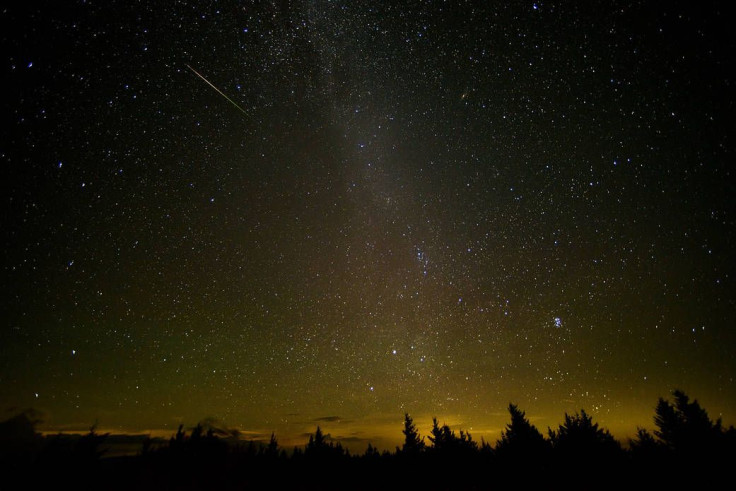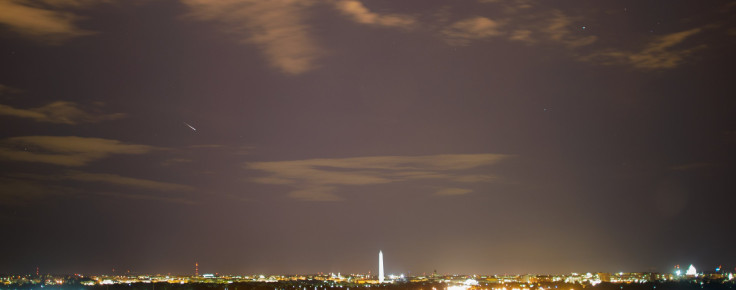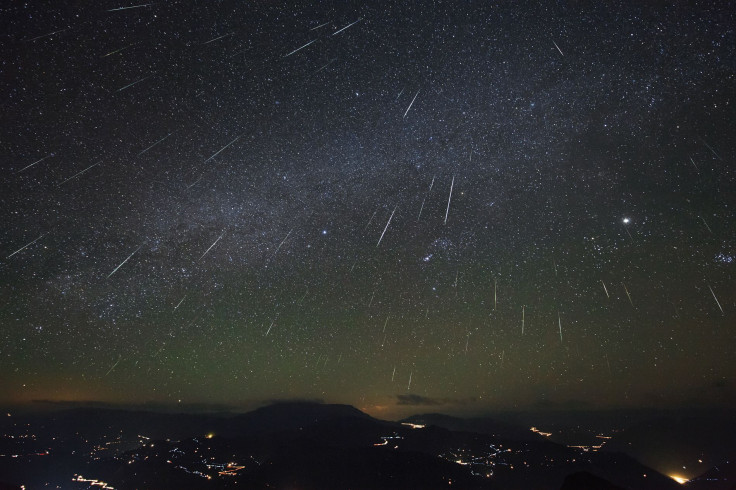5 NASA Photos Show Meteor Showers Streaming Down To Earth

Every year there are multiple meteor showers visible from the Northern and Southern Hemispheres on Earth. Some offer more meteors per hour than others but sometimes unpredictable factors like clouds, storms or a bright moon can hamper viewing opportunities. Luckily, NASA has spectacular photos of meteors streaming down through Earth's atmosphere.
The first recorded meteor shower in North America happened in 1799 by and was reported by an astronomer by the name of Andrew Ellicott Douglass, according to History. He kept a journal in which he recorded his experience viewing the meteors. The shower Douglass saw was the Leonids meteor shower that usually peaks in November. But they have been happening since Earth began even when there was no explanation for them.
Read: When Is Perseid Meteor Shower? Where, How To See It This Weekend
Most showers get their names from the point in the sky from which they appear to originate. This makes it easier for astronomers and viewers to orient themselves when sky gazing for the shooting stars. A meteor is a piece of a rock or even dust that burns up in Earth’s atmosphere as it travels.

While those rocks and dust pieces are still in space they’re simply called meteoroids that are constantly orbiting the sun like the planets and other debris in space do. The meteoroids are a result of asteroids that have hit another object in space and broken into smaller pieces as a result, according to NASA.

If one of those asteroids turned meteoroid turned meteor actually makes it to the ground on Earth, it’s called a meteorite. This is fairly infrequent when compared to how many meteors astronomers hypothesize actually enter Earth's atmosphere on a daily basis. They guess around 10,000 tons of meteors, some possible as small as a speck of dust or grain of sand burn up in the atmosphere each day.

Read: Telescope Catches Space Rocks Crashing Into Moon To Understand Earth’s Meteors
The first meteorite to ever make it to the ground and hit a person (that we know of) weighed 10.3 grams. It flew threw the atmosphere down to the ground, through a roof and hit a woman who was napping on the couch in her home in 1954. The meteorite sold at auction earlier this year for $7,500.

To catch a good view of a meteor shower there are a few best practices to follow. First find out where in the sky the shower will originate from. This is what’s called the radiant. Once you’ve located this in the sky either lay down or sit in a chair so that you’re comfortable and looking up between the sky directly above you and the radiant. If there’s a bright moon that night you can bring a hat to wear to block some of the glare from the moon. It’ll take about a half an hour for your eyes to fully adjust to the darkness. Once you’re setup just take in as much of the sky as possible and keep an eye out for the shooting stars.
© Copyright IBTimes 2024. All rights reserved.











